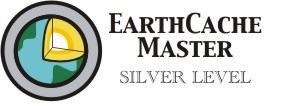* MALTA´S ISLANDS *
Malta is a Mediterranean island state 95 kilometers to the South from Sicily and 290 kilometers to the East from Tunisia. Malta´s archipelago have three settled (Malta, Gozo, Comino) and three uninhabited islands (Cominotto, Filfla, St. Paul´s Island). Islands are a relict of primary earth complex of Africa and Europe, which was interrupted by sea rise. When - it´s one of questions for You to log this cache. Malta´s islands coast terrain is broken and very interesting and You can see there a lot of nature creations and geology speciality of this country.
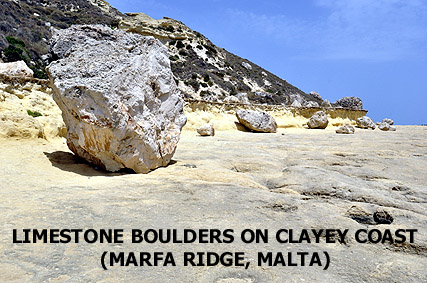
An understanding of the geology of the Malta archipelago is necessary in order to understand the landscape and the uses to which it has been put. The rocks and sediments found are mainly Miocene limestones and clays. The stratigraphic succession is simple and from top to bottom consists of: The stratigraphic sequence. Quaternary Sediments Upper Coralline limestone Greensand. Blue clay. Globigerina limestone Lower Coralline limestone. In many places the geology is exposed in the sea cliffs. 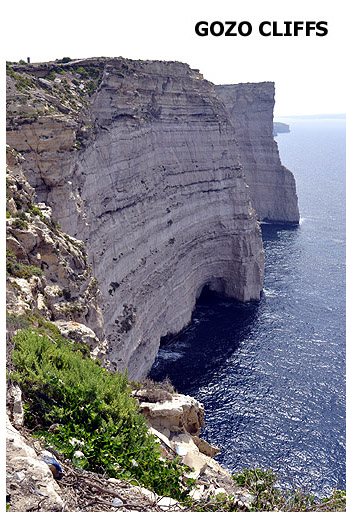
This is particularly true of Gozo with its 140m high cliffs of Lower Coralline limestone. The high ground of the northern and western part of Malta consists of an outcropping of Upper Coralline limestone. It is on this high ground that the ancient capital city of Mdina is perched. Numerous faults can be found, which have given the islands both their precipitous cliffs and the Horst and Graben structures inland which form both the relief and the basins where much of the farming now takes place. Faulting activity has also blessed Malta with the deep natural harbours which were of defensive importance in the past and are of economic importance in the future. The hard Upper Coralline Limestone lies as a cap over much softer sediments, Greensand and Blue clay. Erosion of these sediments, especially on the South Western side of the islands near Golden Bay, have resulted in the formation of a spectacular ridge of Blue clay which leads out to a perched block of Upper Coralline limestone. This headland was used as a defended village in the Bronze Age. The Blue clay forms the base for the most fertile soils on the islands, but its geologic instability is resulting in spectacular cliff collapse all along this coastline. Attitudes to the problem of cliff collapse can range from the sublime to the ridiculous. Where identified this may not pose a serious threat to land use or habitation, but in some locations villages which were built on upper coralline limestone well back from the cliff edge have now been undercut to the extent that buttressing is necessary to prevent the whole village collapsing. The Buttress is comprised of soft Globigerina limestone and is totally unsuitable for such a task. But should result in care, particularly in the location of hotels The foundations of this hotel are set in Blue Clay, and as a result the whole structure is now abandoned and is moving down the hill side. You may see other examples of this as we tour the island. These processes also pose a threat to historical and archaeological monuments. Not much is left of the Neolithic temple which once stood on this clifftop and which would once have resembled the temple at Hagar Qim. You can observe the large fissure which is gradually separating the seaward block of limestone from the cliffline behind.

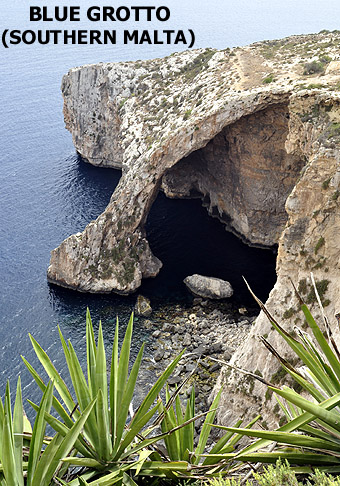
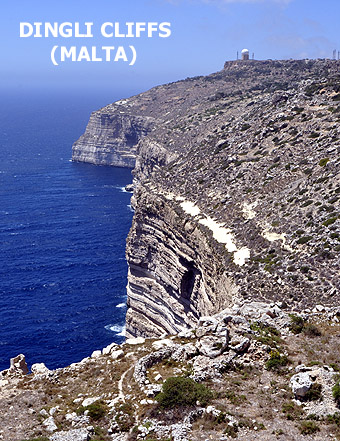
This cache will take You on St. Paul´s Island which is not visited so often as neighbouring Malta, Gozo and Comino. On this one You can watch depict geology speciality and what´s more, it is a nice view place with characteristic statue of Apostle St.Paul on the top, but mainly this island is a Nature Reserve and Natura 2000 Site - nature study area and a historical site. And it´s the reason why earthcache is chosen here, not traditional one. Main reasons for Nature Reserve on this island are a distinct and endemic race of Maltese Wall Lizzard which can only be found on this island, the Lesser Crystal-plant is well adapted to the saline conditions in this environment and Peacock´s Tail assemblages are easily visible in the clear shallow waters here.
On the top of one island You can visit a ruin of the two-storey farmhouse, which was probably constructed during the Knights´ era (1530-1798). It may have served as a dwelling for the farmer who tilled the land.
Due to ecological importance of St.Paul´s Island, this site forms part of the Natura 2000 network of protected areas within EU. It is also a Specially Protected Area under the Barcelona Convention.
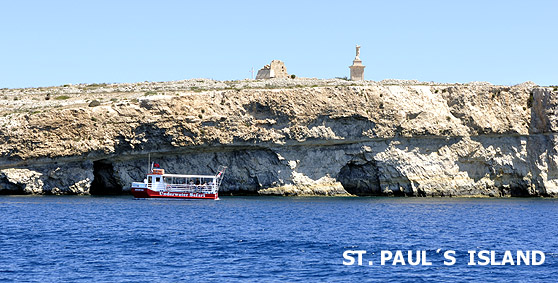
This island has really very important historical and religious aspect for Malta Islands and their inhabitants too! The Statue of Apostle St.Paul (1845) by Sigismondo Dimech and Salvatore Dimech commemorates the Saint´s shipwreck on this place in 60 AD when he said to have brought the christian faith to the Maltese Islands. For inhabitants of this islands it was a first contact with Christianity. Religious tradition preserved here till today and St.Paul´s Bay became a well known and important faitful place. Not only this statue commemorate this event. Apostle-well Ghajn Rasul was build on a place, where thirsty Saint drank a spring water, Tal-Huggiega church on a place where poisonous viper bit St.Paul without aftermath and a little chapel San Paul Milqi near Bur Marrad commemorate a place of Saint´s welcome by Roman ruller Publius, first Malta´s man of that time.
To St.Paul´s Island organize ship trips turist agency from a port in Bugibba, where You can find on inform bord some informations about religious and especially nature importance of this island.
We wish You a happy hunting!
How to log this cache:
1/ Visit St.Paul´s Island and in a proof of Your visit of this island send me by E-mail via profile wording of notice on a great crucifix near statue together with another answers.
2/ Send me by E-mail via profile within 48 hours of posting Your log answers on following questions:
A/ how many thousands years ago became Malta an island due the sea rise
B/ how high are highest cliffs on Malta
C/ latin name of Maltese Wall Lizard living only on St. Paul Island
D/ what material is St.Paul´s statue made from
Add Your snap with St.Paul´s Statue to Your log, please ...!
NOTE: Don´t wait to my confirmation and log Your visit. In a case that Your answers will be O.K.,
I don´t contact You more.
In a case, that You decide to visit St.Paul´s Island by a swim, cache has T: 4,5 !
I am a proud:
